Gaps in a garage door can lead to a variety of issues, including energy loss, pest invasions, and compromised security. Identifying and addressing these gaps promptly is essential to maintain the functionality and safety of your garage.
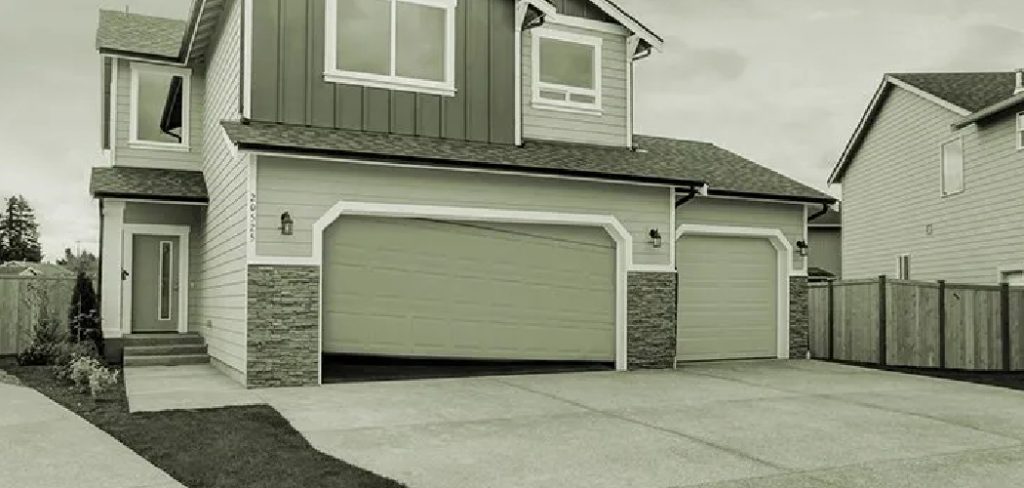
This guide on how to fix gap in garage door will provide step-by-step instructions to help you locate and fix any gaps in your garage door, ensuring a properly sealed and efficient space.
Why Do Gaps Occur in Garage Doors?
Before we dive into the steps to fix a gap in your garage door, it’s essential to understand why these gaps occur. There are several reasons for gaps in garage doors, including:
Natural Wear and Tear:
Over time, the constant opening and closing of your garage door can cause the seals and weatherstripping to become worn or damaged. This wear and tear can create gaps that allow air, pests, and debris to enter your garage.
Improper Installation:
If your garage door was not installed correctly from the beginning, it may have gaps or misalignments that compromise its seal. In some cases, these gaps may not be apparent until years after installation.
Movement of the Garage Door:
As your garage door operates, it may experience movement due to vibrations or changes in temperature. This movement can cause small gaps to form between panels or at the bottom of the door.
10 Steps on How to Fix Gap in Garage Door
Step 1: Inspect the Garage Door
Begin by conducting a thorough inspection of your garage door to identify the location and size of the gaps. Carefully examine the bottom, sides, and top of the door for any visible openings. Pay special attention to the weatherstripping, seals, and panels for signs of wear, damage, or misalignment.
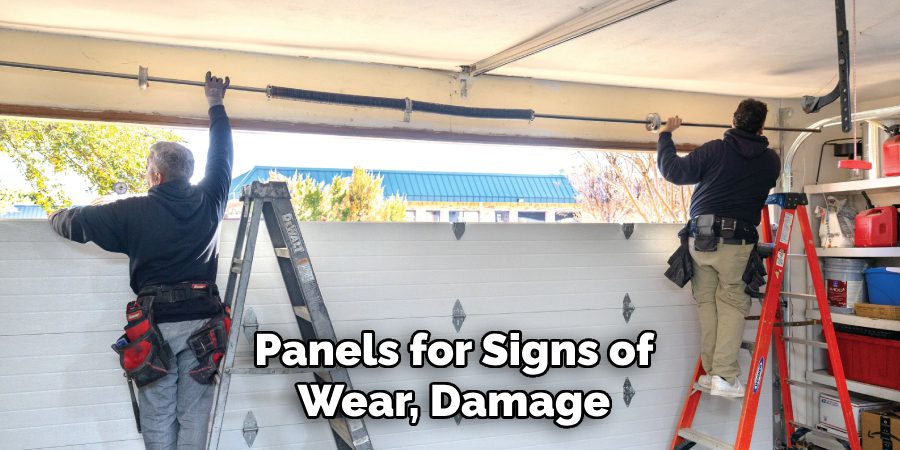
Make a note of any irregularities, as these observations will guide you in determining the best approach to fix the gaps. Also, ensure the tracks and rollers are functioning properly, as alignment issues can contribute to gaps.
Step 2: Measure the Gap
Once you’ve identified the locations of the gaps, use a tape measure to determine their size. Measure both the width and height of the gaps to get an accurate understanding of the space that needs to be sealed.
This step is crucial because knowing the exact dimensions will help you select the appropriate materials, such as new weatherstripping, threshold seals, or panel adjustments. Be thorough and precise, as addressing the gaps effectively depends on these measurements.
Step 3: Clean the Garage Door
Before making any repairs, it’s essential to clean the garage door thoroughly. Use a mild detergent and warm water solution to wash away dirt, debris, and grime that may have accumulated on the surface. Wipe down all areas of the door, including the tracks and rollers.
This step is crucial because dirt and buildup can prevent new weatherstripping or sealants from adhering correctly, compromising their effectiveness.
Step 4: Replace Weatherstripping
If your inspection revealed gaps in the weatherstripping along the sides or bottom of your garage door, it may need to be replaced. Remove the old weatherstripping by pulling it out of its groove.
Measure the length and width of the new weatherstripping, ensuring it matches the dimensions of the gap. Then, push the new weatherstripping into place, making sure it is flush against the door.
Step 5: Install Threshold Seals
For larger gaps at the bottom of your garage door, you may need to install a threshold seal. These seals create a tight barrier between the door and floor and are especially useful if your garage floor is uneven or sloped.
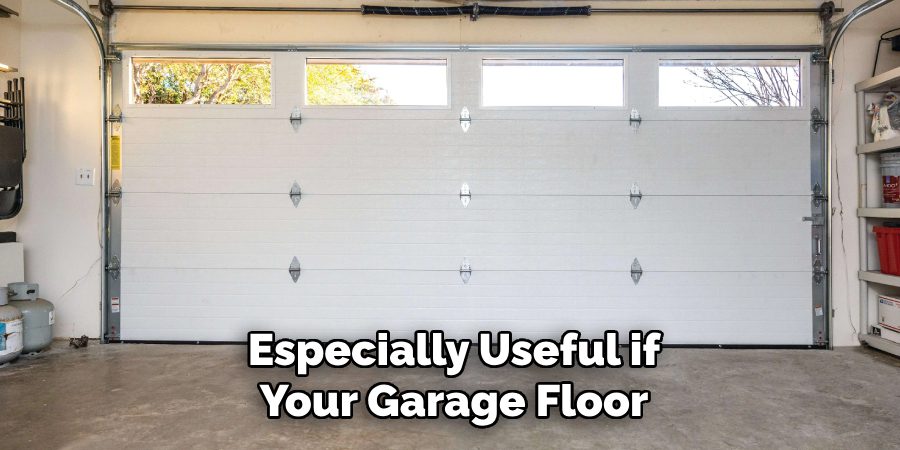
Measure and cut the threshold seal to fit within the gap, then adhere it with an appropriate adhesive. Be sure to follow any manufacturer’s instructions for maximum effectiveness.
Step 6: Adjust Panels
If your inspection revealed gaps between panels on your garage door, you may be able to adjust their placement. Use a level to ensure the panels are aligned properly and make any necessary adjustments with the appropriate tools.
You may need to loosen screws and bolts to adjust the panels, then tighten them once they are in the correct position. Be sure to check for proper alignment and functionality after making adjustments.
Step 7: Seal Small Gaps with Caulk
For small gaps along the sides or top of your garage door, you can use caulk to seal them. Use a caulk gun to apply a continuous bead of caulk along the gap, then smooth it out with your finger or a tool.
Be sure to choose an appropriate caulk for outdoor use and allow time for it to dry completely before testing its effectiveness.
Step 8: Replace Damaged Panels
If your inspection revealed significant damage or warping to one or more panels, you may need to replace them entirely. Contact a professional for guidance on the best course of action and assistance with installation if needed.
The cost of replacing panels can vary, so be sure to get quotes from multiple providers for the most affordable option.
Step 9: Test and Adjust
After completing your chosen method(s) to fix gaps in your garage door, it’s crucial to test its effectiveness. Open and close the door several times, checking for proper alignment, functionality, and a tight seal.
If you notice any issues or gaps persisting, revisit the areas you addressed and make any necessary adjustments until you achieve a satisfactory result.
Step 10: Regular Maintenance
To prevent future gaps from occurring in your garage door, it’s essential to schedule regular maintenance. This includes cleaning the door regularly, inspecting weatherstripping and seals for wear, and addressing any issues promptly.
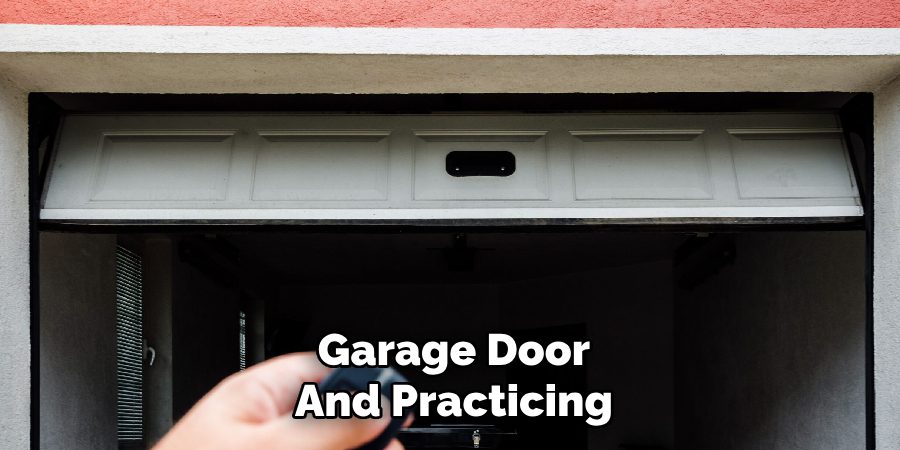
By following these steps on how to fix gap in garage door and practicing regular maintenance, you can effectively fix gaps in your garage door and keep it functioning properly for years to come.
When to Call a Professional?
While many garage door gap issues can be fixed with DIY methods, there are instances where calling a professional is the best course of action. If the problem involves structural damage, such as warped panels, significant misalignments, or a malfunctioning door mechanism, professional assistance is highly recommended. Additionally, if you are unsure how to safely make adjustments to heavy components like springs, tracks, or panels, it’s better to rely on an expert to avoid injury or further damage.
For more complex repairs or replacements, professionals have the specialized tools and expertise required to address the problem effectively and ensure your garage door operates smoothly. If your fixes do not resolve persistent gaps or the issue worsens after attempted repairs, it may indicate a deeper or more technical problem. Reaching out to a qualified technician ensures you receive proper guidance and a lasting solution tailored to your garage door’s specific needs.
Preventive Maintenance Tips
Taking proactive steps can help you avoid common issues with your garage door, including the development of gaps. Here are some preventive maintenance tips to keep your garage door in optimal condition:
Inspect Weatherstripping Regularly:
Check the weatherstripping along your garage door’s sides and bottom regularly for wear or damage. Replace it as needed to ensure a tight seal.
Keep Tracks Clean:
Make sure to keep the tracks clean of debris, dirt, and buildup that can affect their functionality. Use a soft brush and mild detergent to remove any build-up regularly.
Lubricate Moving Parts:
To maintain smooth operation, use an appropriate lubricant on moving parts like rollers, bearings, hinges, and springs. Avoid using WD-40 or similar products as they will attract more dirt and grime over time.
Check Door Balance:
Periodically check your garage door’s balance by disconnecting the opener and manually opening it. The door should stay open about three to four feet above the ground. If it doesn’t, seek professional help to adjust the tension.
Keep Hardware Tight:
Regularly check that all hardware is properly tightened and secured. Loose bolts, screws, or tracks can cause misalignments and gaps in your garage door over time.
By following these preventive maintenance tips, you can prolong the life of your garage door and prevent potential issues from arising. In addition to saving time and money on repairs, you’ll have peace of mind knowing your garage door is in top condition.
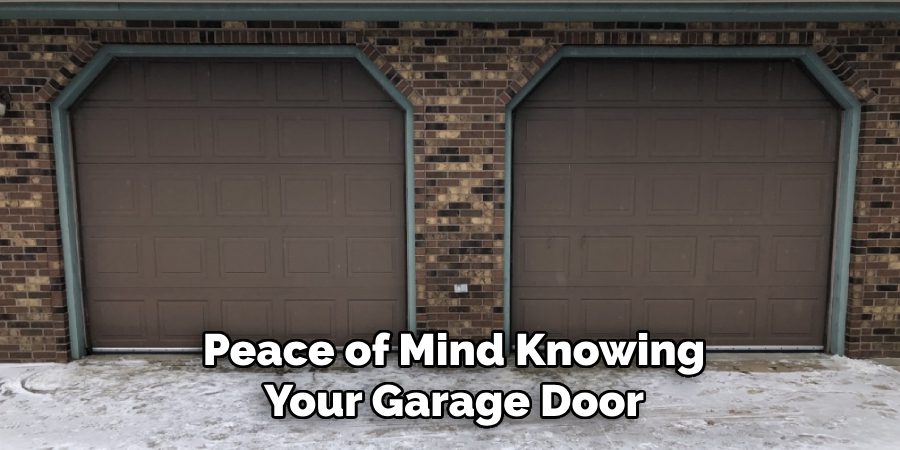
Frequently Asked Questions
Q1: How Can I Tell if My Garage Door Needs to Be Balanced?
A: If your garage door is difficult to open or close, makes strange noises, or appears uneven when opening or closing, it may be out of balance. You can also check by disconnecting the opener and manually opening the door. If it doesn’t stay in place at about three to four feet above the ground, it may need to be balanced.
Q2: Can I Use Any Type of Caulk to Seal Gaps on My Garage Door?
A: It’s essential to choose an outdoor caulk that is appropriate for use on your garage door material. Silicone-based caulks are suitable for most materials and provide a weather-resistant seal.
Q3: How Often Should I Schedule Maintenance for My Garage Door?
A: Schedule maintenance at least once a year or bi-annually, depending on the frequency of use and potential wear and tear. Regular inspections and preventive maintenance can catch issues early on and prevent more significant problems from arising.
Conclusion
Maintaining your garage door is an essential aspect of home care that ensures its longevity, functionality, and security. By addressing issues like gaps promptly and performing regular preventive maintenance, you can avoid costly repairs and enhance the energy efficiency of your home.
Whether using DIY methods or seeking professional assistance, taking proactive steps will keep your garage door in excellent condition for years to come. A well-functioning garage door not only protects your belongings but also adds to the overall value and safety of your home. Thanks for reading this article on how to fix gap in garage door.
Professional Focus:
Arden Bernier is dedicated to exploring and advancing patio design and maintenance, combining practical knowledge with innovative solutions. Specializing in outdoor living spaces, he provides expert advice on patio fixes, landscaping, and sustainable outdoor design. With a focus on creating functional, aesthetic, and durable outdoor environments, Arden empowers homeowners to transform their patios into beautiful and relaxing retreats.
Vision:
To inspire and assist homeowners in creating functional, aesthetically pleasing outdoor spaces. Arden encourages creativity and practical problem-solving in patio design, making outdoor living more accessible and enjoyable for everyone.
Education:
- Bachelor of Arts (BA) in Environmental Design – University of California, Berkeley.
- Master of Science (MS) in Landscape Architecture – University of Southern California.
- Specialized training in sustainable landscape design, outdoor space planning, and eco-friendly materials.
Recognition:
- Author at PatioFixes.com, providing expert advice on patio maintenance and design.
- Featured in online platforms and home improvement blogs for valuable tips on patio fixes and outdoor living.
- Recognized for his contributions to making outdoor spaces more eco-friendly and sustainable.
Expertise:
Patio expert with a focus on creating functional, beautiful, and durable outdoor living spaces. Specialization includes:
- Patio design and construction
- Outdoor furniture and décor
- Landscaping and sustainable patio solutions
- Outdoor maintenance and repair techniques
